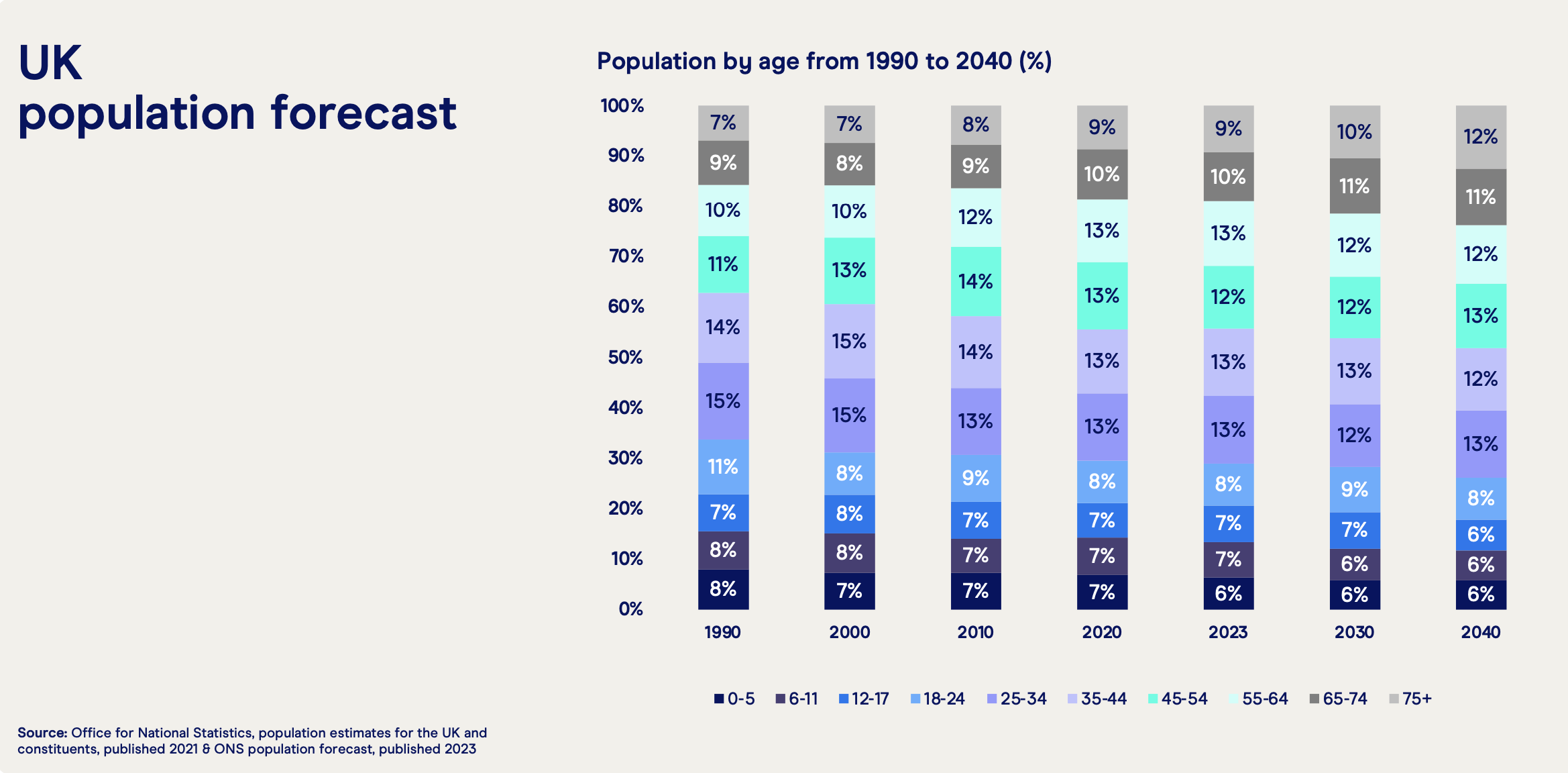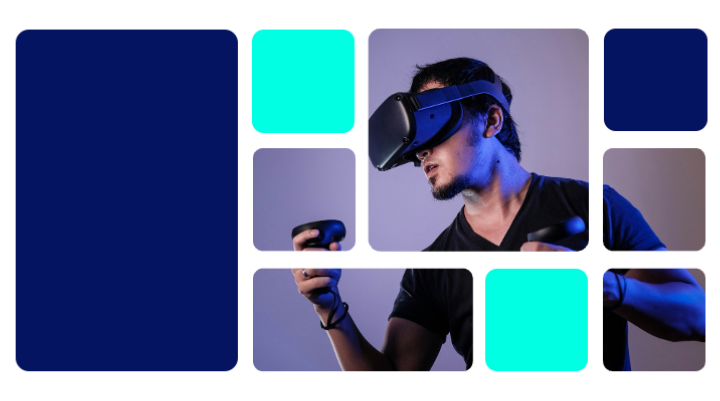By 2030, advertising will be adapting to a shifting demographic landscape and changing societal values. The UK population will be older - with over 58% of people aged 35 or above - and household structures will be increasingly diverse, with the nuclear family in the minority. As a result, targeting consumers based on age, life stage or family structure will no longer resonate and will become increasingly redundant routes for advertisers, requiring a rethink of audience targeting.
Older generations will redefine aging
With more people living longer, groups that society has historically defined as ‘middle-aged’ and ‘pensioners’ will redefine aging - with many staying physically and mentally active for far longer than previous generations. Crucially, younger generations will no longer be the gatekeepers of cultural trends or tech adoption, with so-called ‘youth behaviours’ becoming universal. For example, over 55s already make up 20% of all concert-goers - a trend that will only grow. Advertisers’ strategies will increasingly need to embrace these multigenerational audiences, creating more inclusive messages that reflect universal desires for health, enrichment and new experiences. The idea of categorising audiences by age alone will give way to more nuanced approaches.

The sustainability contradiction
Gen Z and Millennials already display high levels of activism and social consciousness, particularly around environmental sustainability and social justice issues. In 2030 and beyond, Gen Z will drive consumer trends for sustainability, with a demand for greener products and more ethical business practices. However, advertisers must also acknowledge the contradictions that exist within this group when it comes to sustainability, such as a reliance on fast-fashion brands like Shein and Temu. Advertisers will have to balance these conflicting desires, while also becoming drivers for ‘doing good’ themselves (see section 3 for more).
Embracing household complexity
The rise in the average age of homebuyers, delayed parenthood, and multigenerational households will shape advertising strategies in 2030. The unaffordability of housing has already led to more people staying at home longer, and this will continue into the 2030s. Advertisers will need to recognise that younger consumers are no longer living in traditional “starter homes” or starting families early. At the same time, older age groups will be juggling work, family responsibilities and caregiving duties for aging parents. To resonate, campaigns will need to acknowledge a diverse range of complex realities. Household products, financial services, and health-related brands in particular will be expected to tailor their messaging to address the multi-faceted needs of modern households.
"There's this future out there where you will only get served ads that are of interest to you, so you would actually have no need to avoid them. You might actually welcome advertising - but we are not there yet. Grouping people by age, demographic and even life stage is just not relevant anymore. I genuinely think that stereotypes are dead."
Sue Unerman, Chief Strategy Officer, Brainlabs
Technology will elevate advertising experiences
Finally, advancements in technology - such as virtual reality and immersive experiences - will offer new and increasingly compelling opportunities for advertisers to engage with consumers. By 2030, advertisers will need to integrate these technologies into their campaigns, offering interactive and immersive experiences that speak to consumers' desires for both virtual and real-world engagement. This will be particularly important for reaching the growing market of older adults, who are increasingly active and engaged in cultural moments.
How to future-proof for 2030
- Rethink your growth strategies for 2030 - focusing solely on younger demographics will limit potential. A critical review of audience definitions and targeting methods is necessary to ensure advertisers are not overlooking the huge value in the 40+ age group by applying outdated demographic assumptions
- Move away from age-based targeting and rigid stereotypes about the ‘ideal target segment’ - both of which will be largely obsolete by 2030. The future lies in embracing new ways to identify potential buyers by leveraging data and technology to create more personalised strategies
- Unlocking communities is key. By segmenting audiences based on interests and activities, media owners can attract communities and tribes united by shared passions, offering a competitive advantage for advertisers to align with these niches
- Pioneer seamless shopping experiences. By 2030, the majority of adult shoppers will be heavy online consumers with high expectations of their shopping experiences. To meet these demands, brands must provide seamless, AI-driven interactions, immersive virtual shopping experiences, and have an integrated social media presence that merges with emerging technologies
Download full chapter

In-depth research slides
Explore the story behind the trends with detailed slides from this chapter
Learn more
Quick-read summary
Access a downloadable version of the content on this page for a round-up of the key insights
Learn more
Society & culture infographic
Capture the main takeouts from this section, ideal for sharing or coming back to later
Learn more